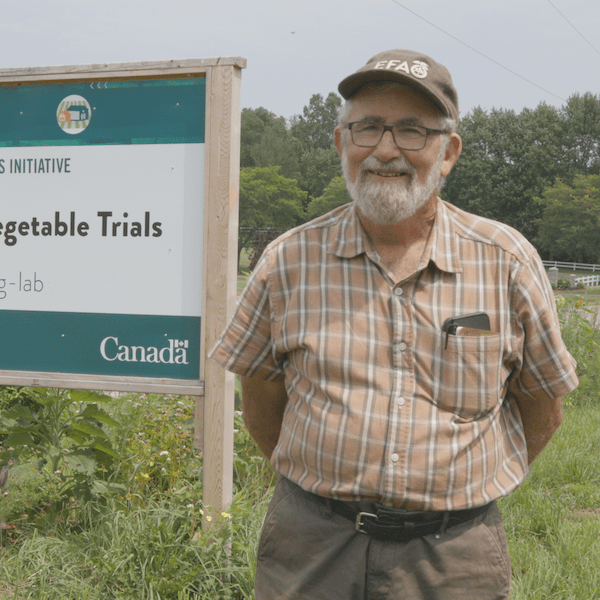Background
The Living Laboratories Initiative is an integrated approach to agricultural innovation that brings farmers, scientists, and other partners together to co-develop, test, and monitor new practices and technologies in a real-life context. Learn more >
As a collaborator on the Living Lab – Ontario project, EFAO’s two farm sites focus on reduced tillage and continuous cover for organic field crop production and organic vegetable production. This is an interim summary of Ken Laing’s trials in 2020 and 2021 comparing different cover crops and mulching systems to reduce tillage and maintain continuous cover for transplanted and direct seeded organic vegetable crops.
About Ken’s Site
Guiding Principles
- Developing strategies to grow organic no-till vegetables
- Use mechanized approach suitable for mid-scale vegetable grower (i.e. 10-50 ac)
- Avoid the use of agricultural plastic materials
No-Till Strategies Used
- Planting or transplanting into winter killed cover crops
- Planting or transplanting into green cover crops either before or after termination
- Planting or transplanting into deep compost mulch (DCM)
Read more about the equipment Ken uses in the trials >
Research Strategies Used
- 2020 | A broad survey or proof of concept of many strategies and crops to narrow down promising combinations.
- 2021 | Demonstration plots of the most promising combinations from 2020
- 2022 | Randomized, replicated plots of the demonstration plots from 2021
This interim summary covers Ken’s observations from 2020 and 2021, including a focus in 2021 on no-till potatoes, garlic and winter squash.
Findings from Year 1 | 2020
Because the project did not start until December 2019, we had to use cover crops that were already in the ground. These areas were not designed as trial plots but never the less allowed us to start – what turned out to be a very steep learning curve.
8 crops trialed
- spinach, peas, beans, sweet corn, tomatoes, squash, sunflowers and garlic
7 surface treatments
- daikon radish, daikon+DCM, sorghum-sudan, sorghum-sudan+DCM, oats/barley/peas rolled, winter rye rolled and DCM on tilled ground
- treatments were tried for some or all of the crops and no hand or mechanical weed control during the growing season

Summary for 2020
The weed control offered by various cover crops differed greatly. In order of increasing weed control, I observed that daikon radish cover crop result in the the worst weed control, followed by oats/barley/peas, sorghum-sudan grass, rye – with deep compost mulch (DCM) having the best weed control.
While DCM had the best weed control, it can lead to problems if weed seeds get scooped up with the compost when stockpiled at a dealers or when stored at the farm. The DCM in 2020 was ¾ wood chips ¼ spent mushroom compost.
Other observations from the year include:
- Cover crop strategies for successful no-till usually must start at least one year before planting the cash crop; and research trials must account for this.
- No-till soils become very firm which makes it a challenge for crop plants to explore the soil for water and nutrients. Getting machinery to close the seeding or transplanting trench is difficult because the soil in full of roots like sod. It is also difficult to get machinery that is equipped to cut through the amount of residue necessary for season long weed control.
- Waiting for green covers to mature enough to be terminated by rolling can delay planting too much.
- Soils in poor condition or health may be a strong determining factor in the success of no-till methods. More work needs to be done to ascertain if a simple soil test like “active carbon” would be a reliable indicator of the appropriateness of specific fields to no-till production.
- No-till techniques can allow more leeway for row spacing because do not need to design for tillage machines to control weeds. E.g. Can put 2 rows of potatoes 24” apart in 60” bed because no need to till for weed control or hilling.
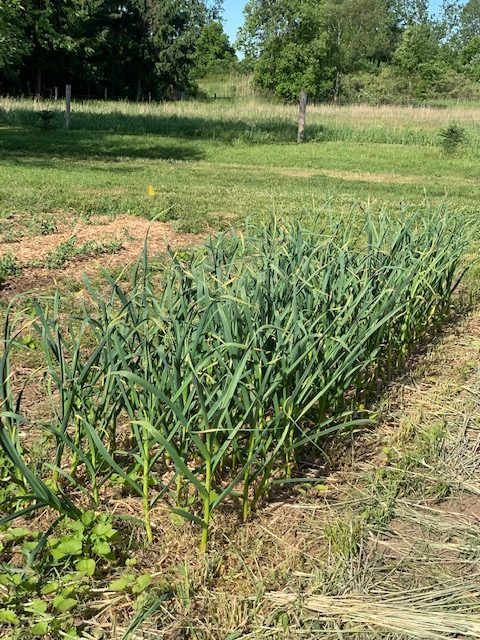
Figure 1. Hand planted garlic into winter killed sorghum sudan.
- 60” beds
- 4 rows with 12″ between-row 12” spacing
- plants at 5-6” in-row spacing
- yield was 7,500 lb/ac

Figure 2. Winter squash transplanted into deep compost mulch on top of tilled soil.
- yield was 70,489 lb/ac
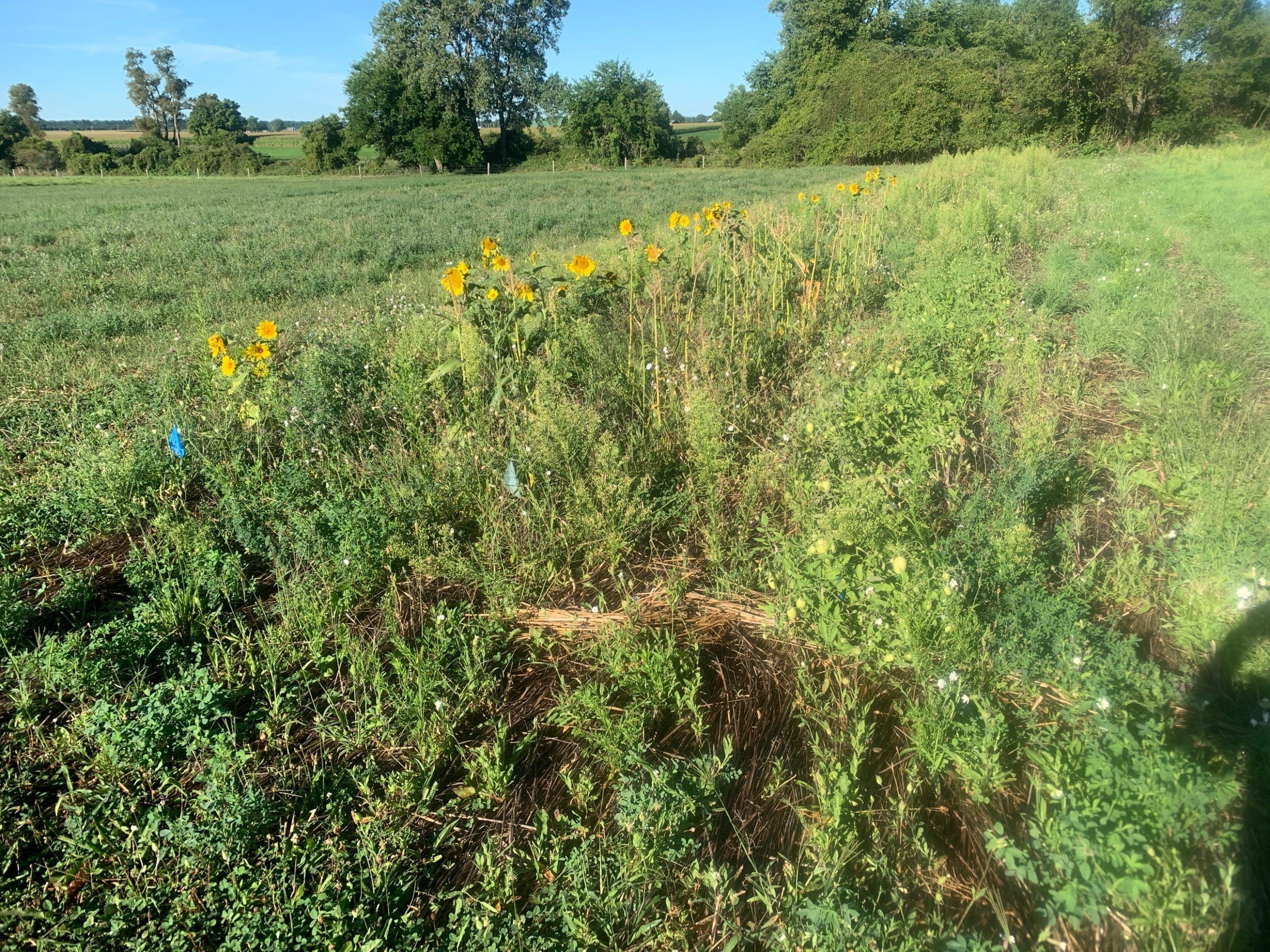
Figure 3. 2020 no-till plots of squash in rolled rye – both seeded and transplanted – did very poorly.
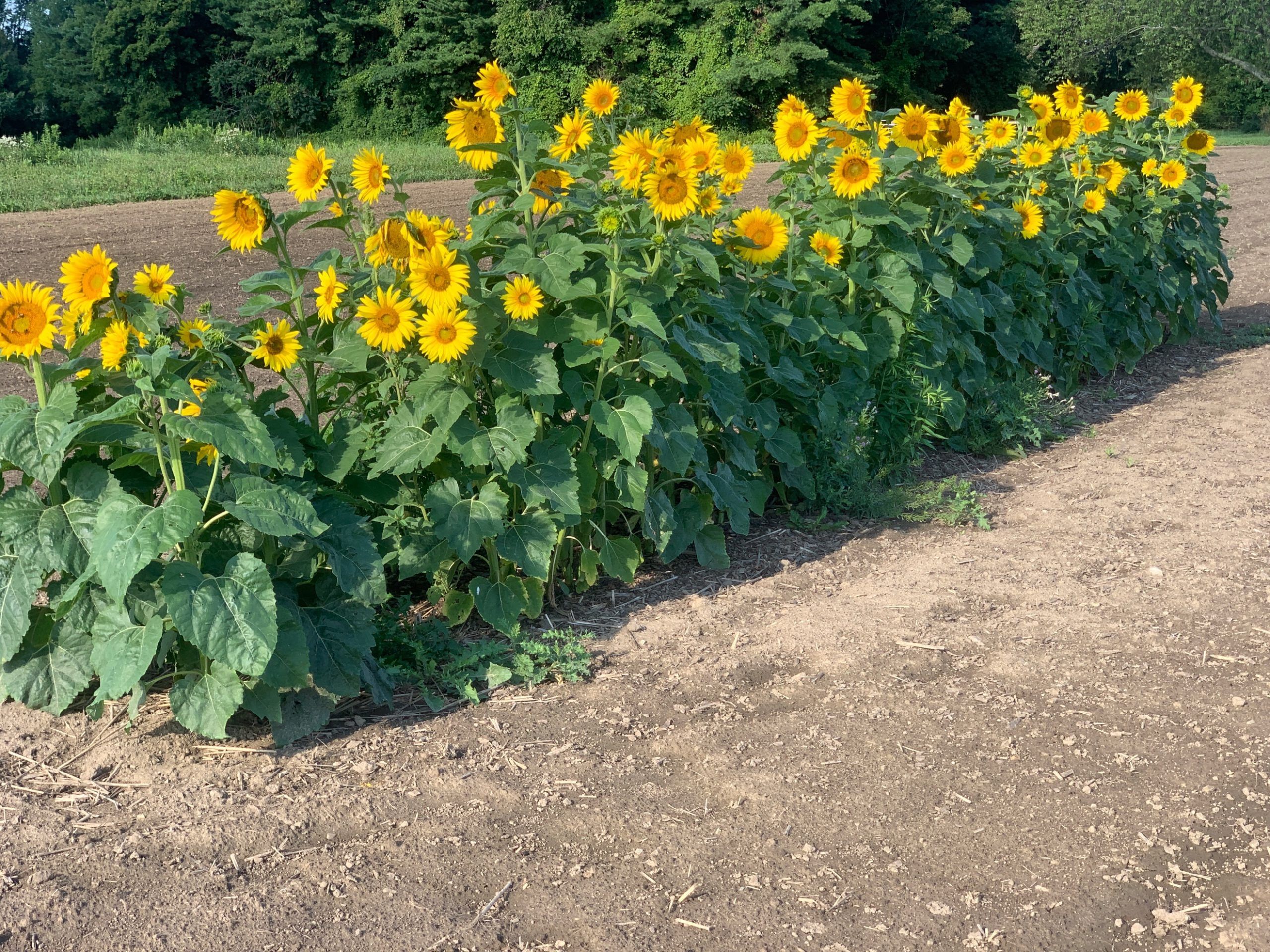
Figure 4. Sunflowers seeded into DCM over winter killed sorghum-sudan.
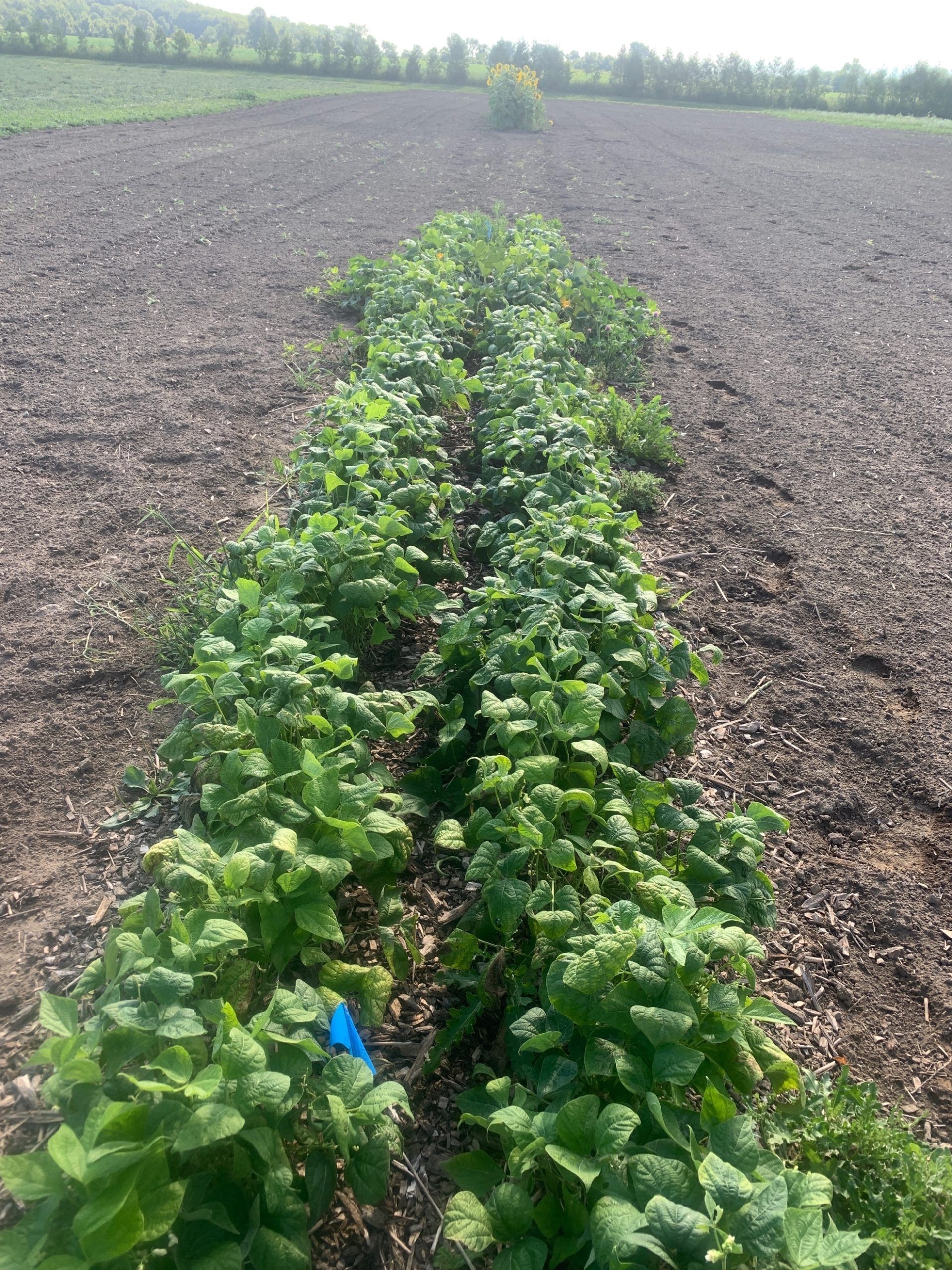
Figure 5. Green beans seeded into DCM on top of winter killed sorghum-sudan.
Findings from Year 2 | 2021
From 2020, the crops that looked promising were: garlic, potatoes, and winter squash. For this reason, Ken focused on these three crops in 2021.
Tweaks to the trials:
- Plots were moved to a better field
- More covers and combinations of covers were used
- Legume covers were used pure or in combinations

Garlic Data
Preliminary results from unreplicated plots from Ken’s 2021 no-till garlic demonstration plots.
Location AC | Marketable Yield, 11,223 lbs/ac | Bulb Size, 72.5 gram/bulb
- Average of 3 plots
- AC was in a location of a long-term market garden with sandy loam soil.
Location RS | Marketable Yield, 8,358 lbs/ac | Bulb Size, 52.6 gram/bulb
- Average of 2 plots
- RS was in a location that came out of poultry pasture with loam to clay loam soil.
- Yield weights measured after curing.
- Garlic planted into mown sorghum-sudan in the fall of 2020 with slightly modified RJ Equipment no-till carousel plug planter.
- There was no hand or mechanical wedding, and all garlic was harvested by hand with a fork.
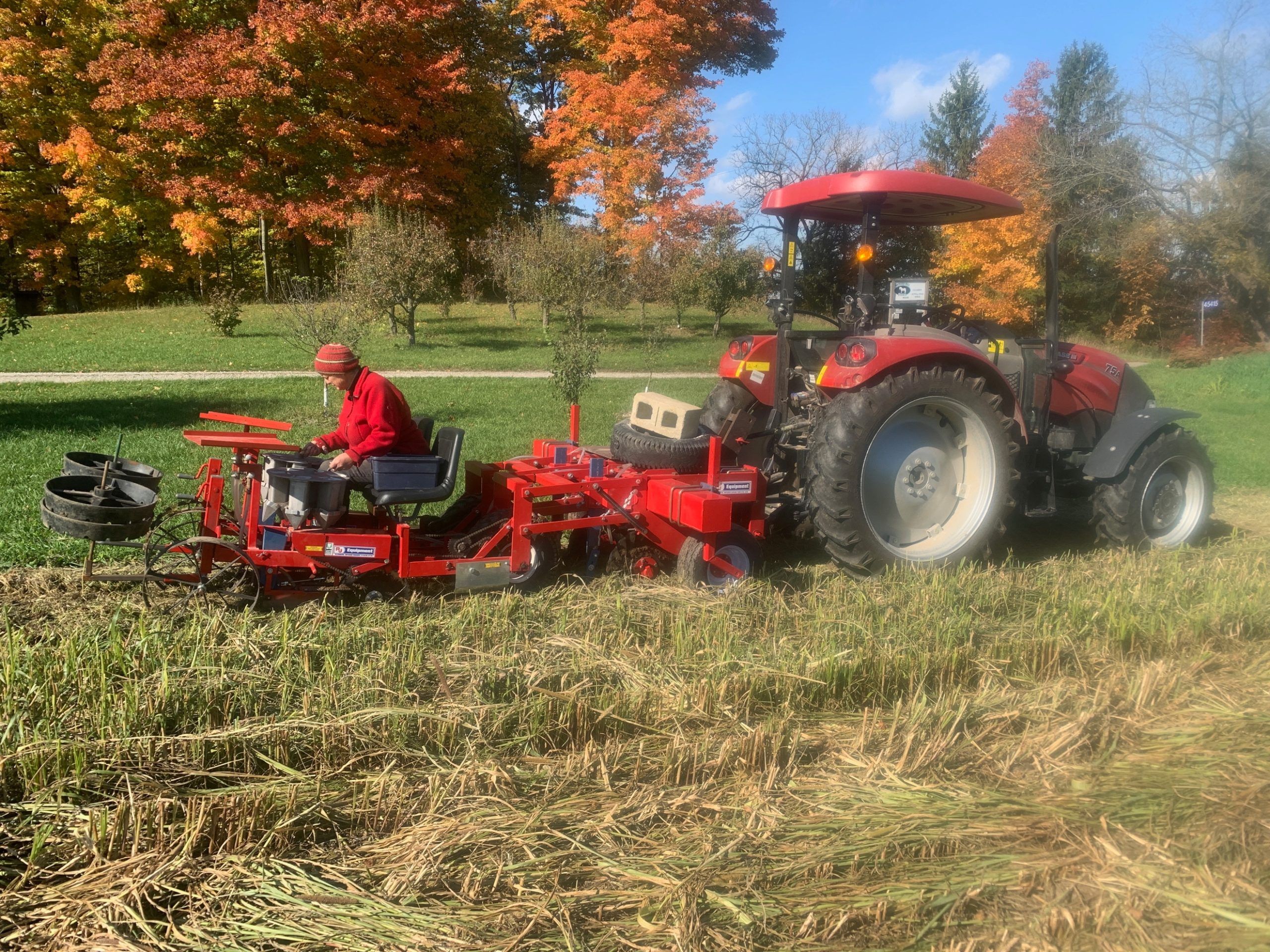
Figure 6. Planting garlic into mown sorhgum-sudan cover crop in fall 2020.

Figure 7. No-till garlic plots in April 2021.

Figure 8. Garlic plots at harvest time in summer 2021.
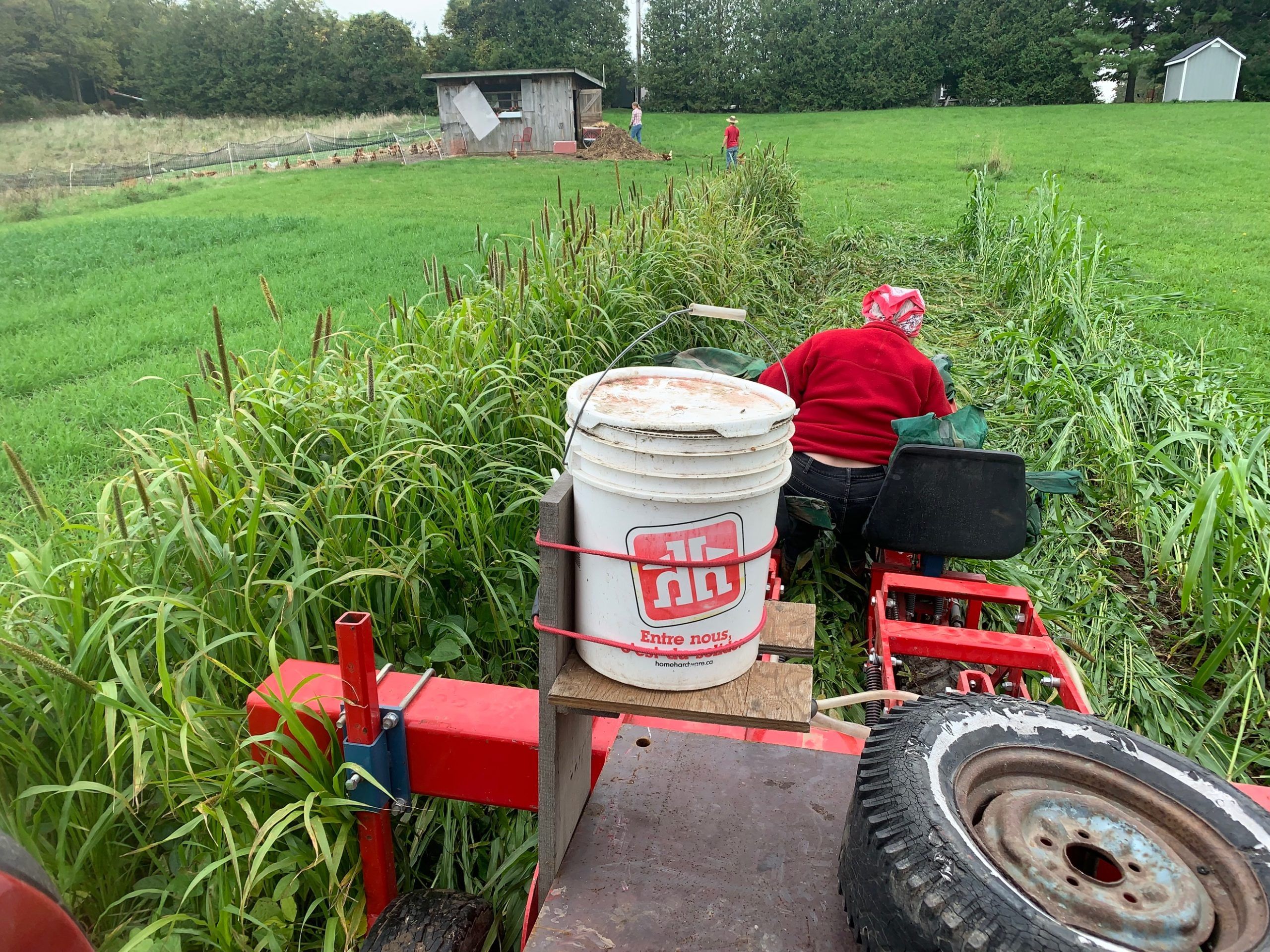
Figure 9. Planting garlic into standing rye/vetch or millet/cowpeas to avoid too much residue on the surface, fall 2021. We mowed the standing residue after it was killed by frost.
Winter Squash
Preliminary results from unreplicated plots from Ken’s 2021 no-till garlic demonstration plots.
Transplanted no-till into rolled rye/hairy vetch | Average yield of 13,684 lbs/ac
- The squash transplanted into rolled rye had a hard struggle.
Transplanted no-till into rolled hairy vetch | 29,950 lbs/ac
- The squash transplanted in the hairy vetch looked more promising since the production was reasonable and the weed control was quite acceptable.
Transplanted no-till into deep compost mulch (DCM) on top of various cover crops | 49,616 lbs/ac
- The DCM was very productive, but profitability depends on your costs for compost and the price you can command for the squash. This DCM was spent mushroom compost $35/t delivered. Using a rule of thumb of 50 tons/inch and 2” layer, you are looking at 100 tons/ac of compost to grow squash with DCM.
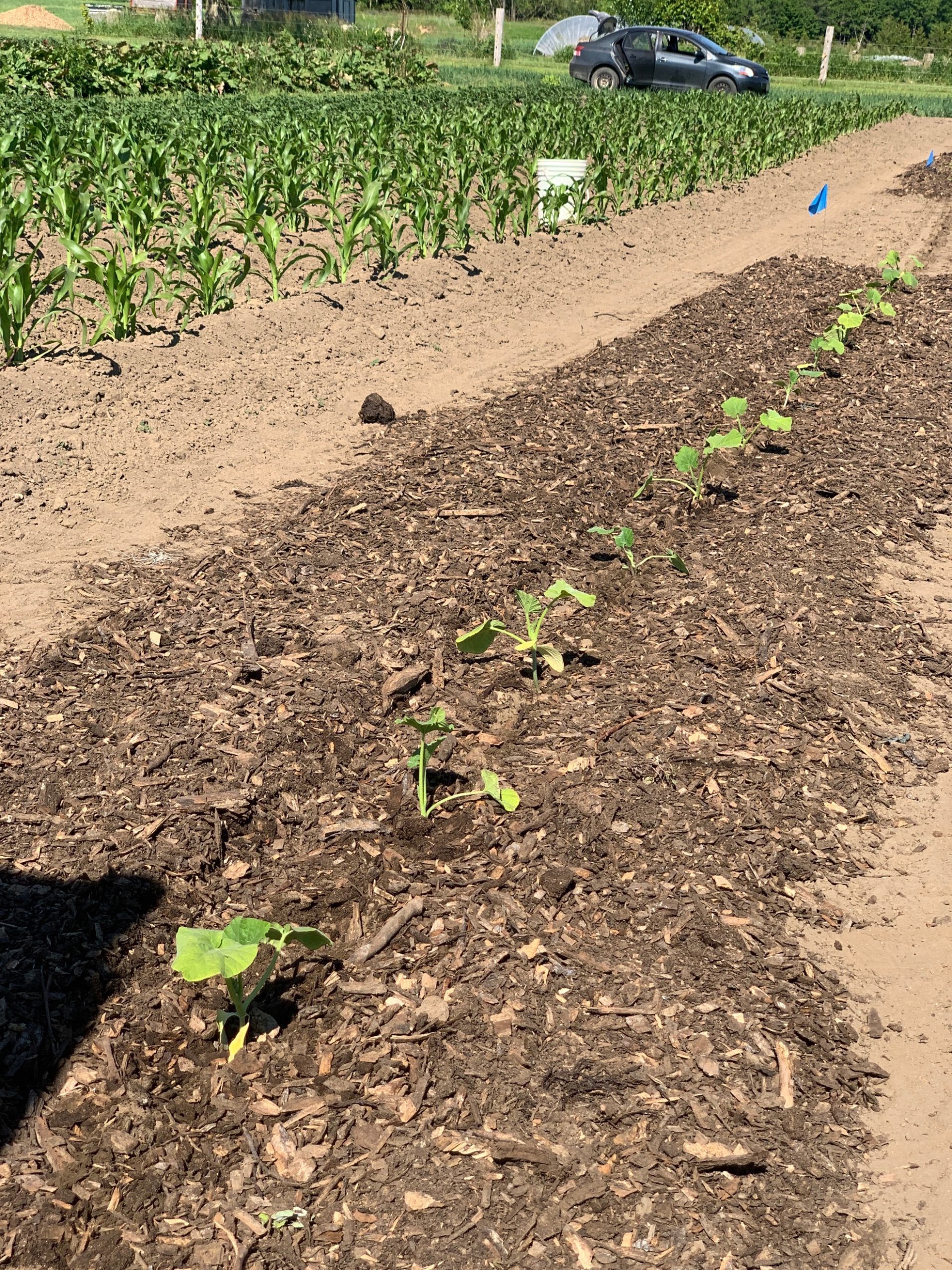
Figure 10. Winter Squash transplanted into DCM.
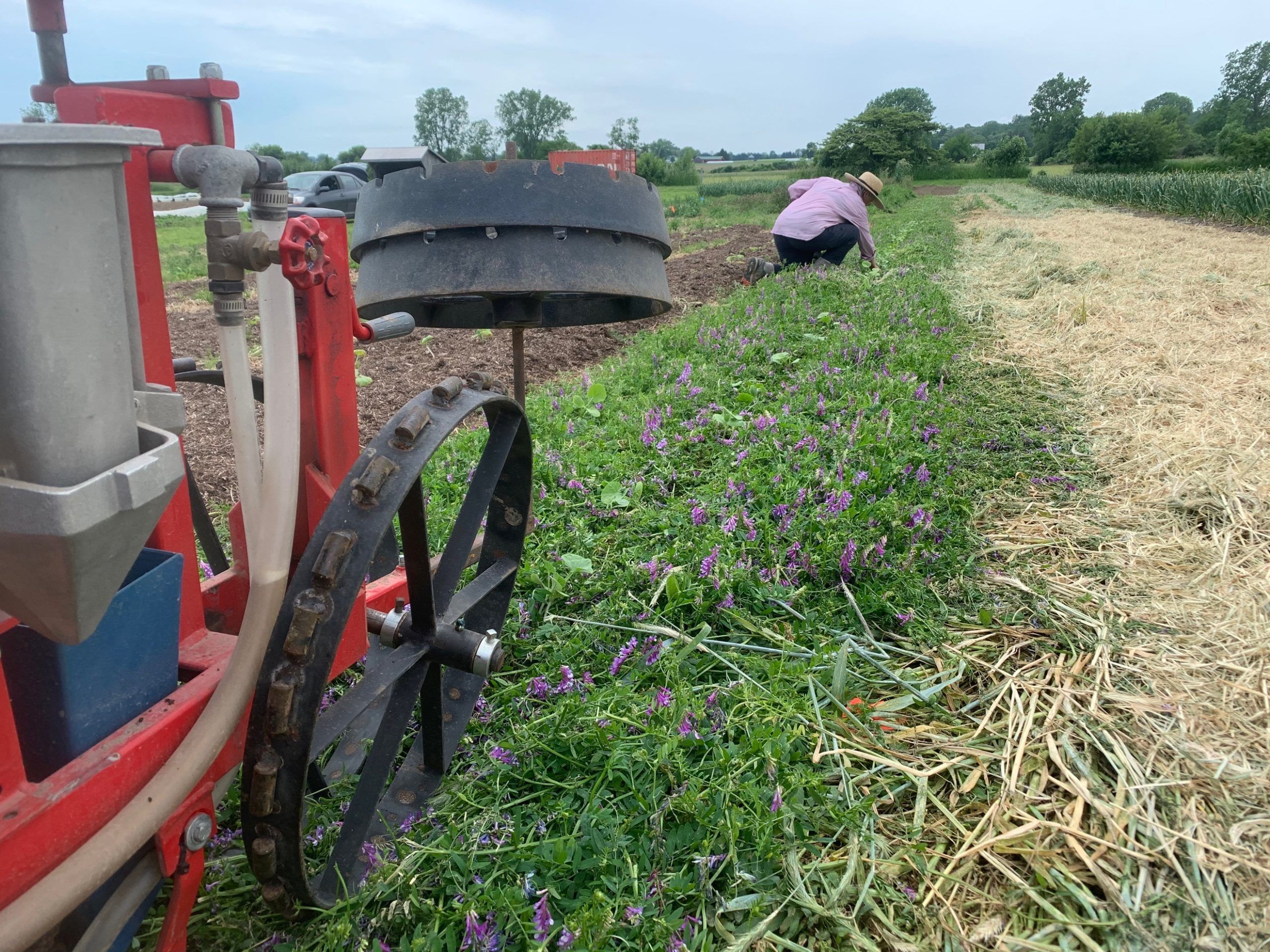
Figure 11. Winter squash transplanted into rolled hairy vetch.

Figure 12. Lefthand row in rolled hairy vetch, righthand 2 rows in rolled rye/hairy vetch.
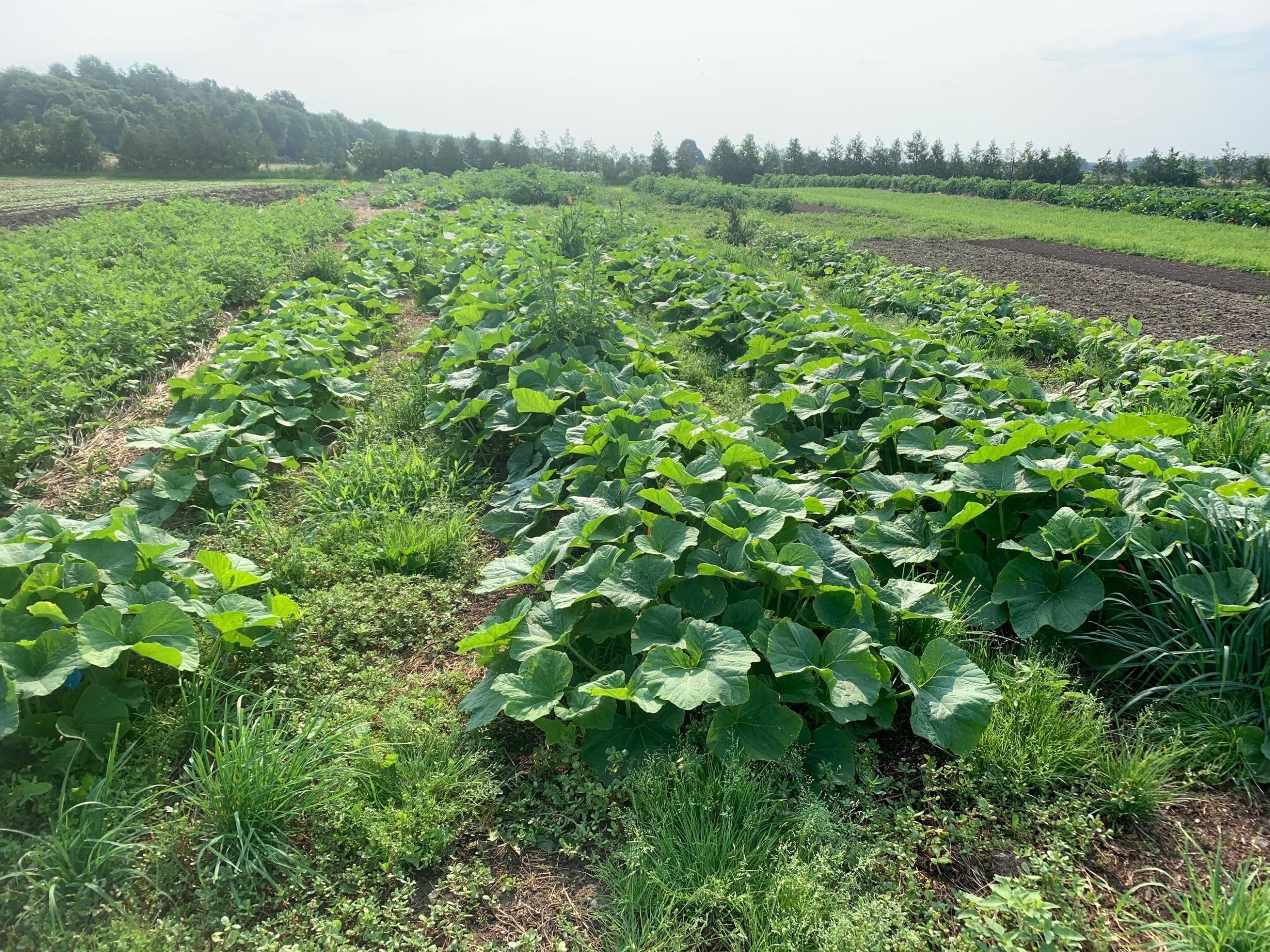
Figure 13. Left row winter squash transplanted into rolled hairy vetch; right 2 rows had the same planting date and variety (Butter Scotch) but transplanted into DCM on top of rolled hairy vetch (middle row) and on top of crimson clover in right hand row.
Potatoes
Preliminary results from unreplicated plots from Ken’s 2021 no-till potato demonstration plots. All yields are in lbs/ac.
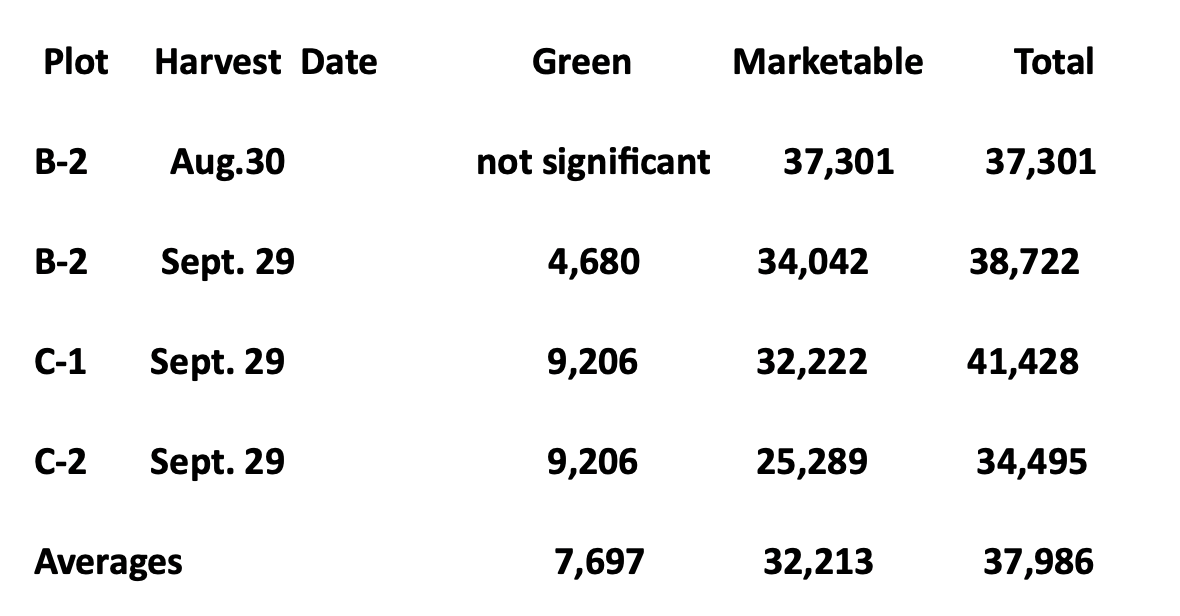
- Variety: Orchard Hill Rose, leaf hopper resistant selection
- Sidedressed with 1200 lb/ac organic hen pellets
- 1 application of Entrust for Colorado Potato Beetle
- No hilling
- No hand or mechanical weed control

Figure 14. Planting potatoes into standing rye/hairy vetch April 21, 2021. 2 rows 24” apart in 60” bed. Seed pieces had to be made smaller than optimum to prevent plugging in the opener shoe. We were aiming for 12” spacing in the row.
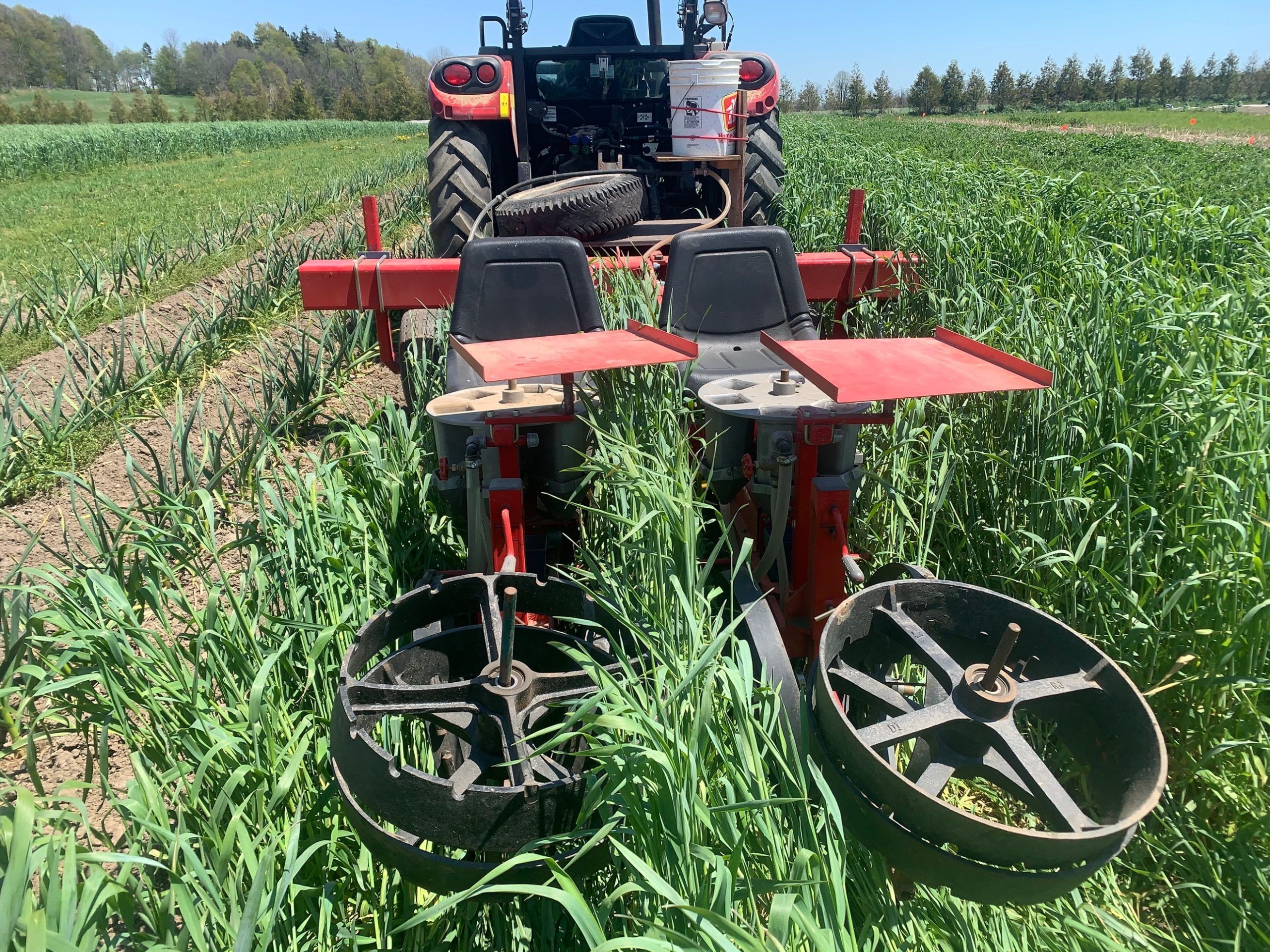
Figure 15. Planting potatoes May 14 into more advanced rye/hairy vetch.
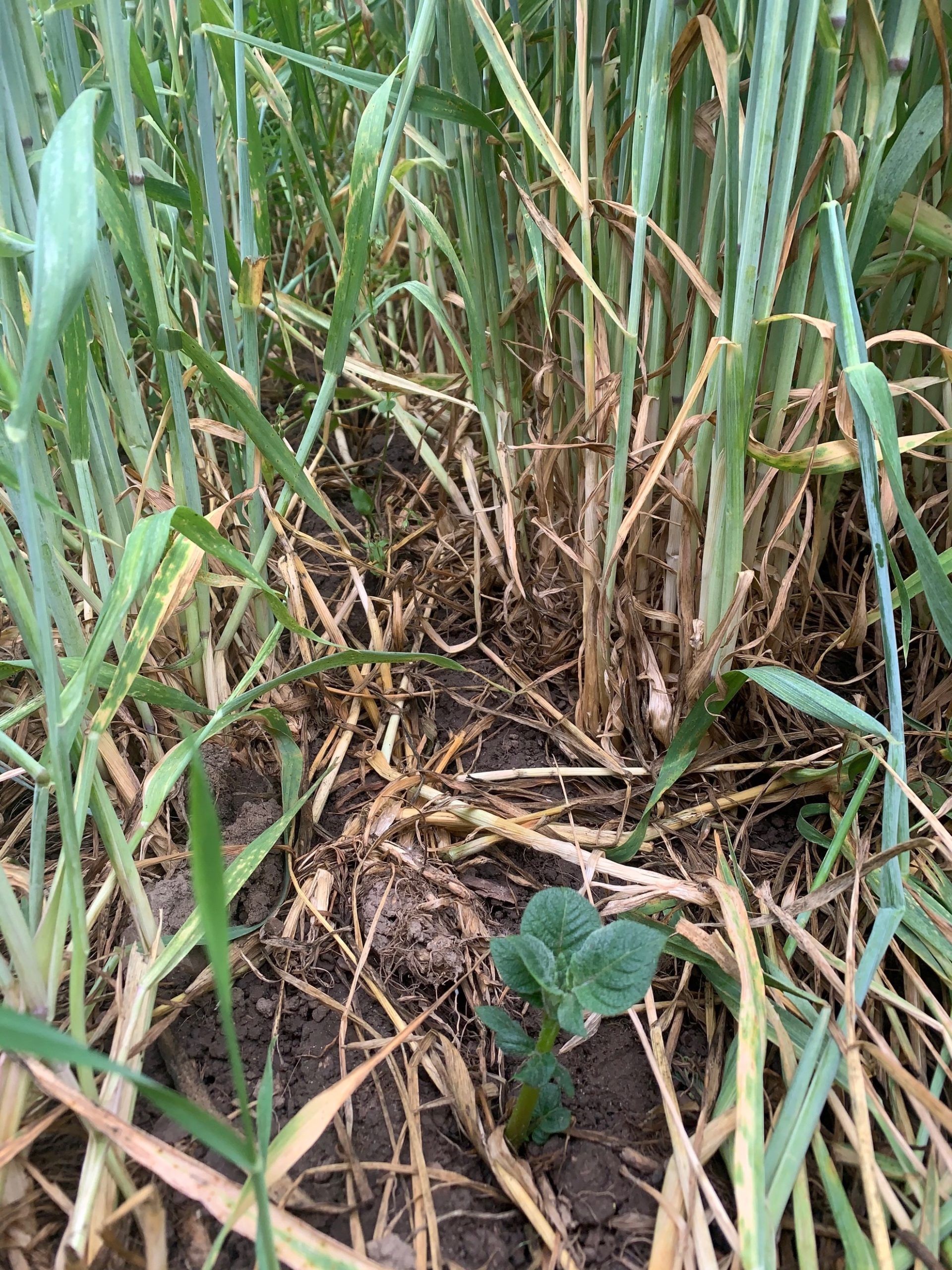
Figure 16. It is time to flail mow cover crop when first potatoes emerge.

Figure 17. Flail mowing rye/hairy vetch cover crop May 24 for potatoes planted on April 21.
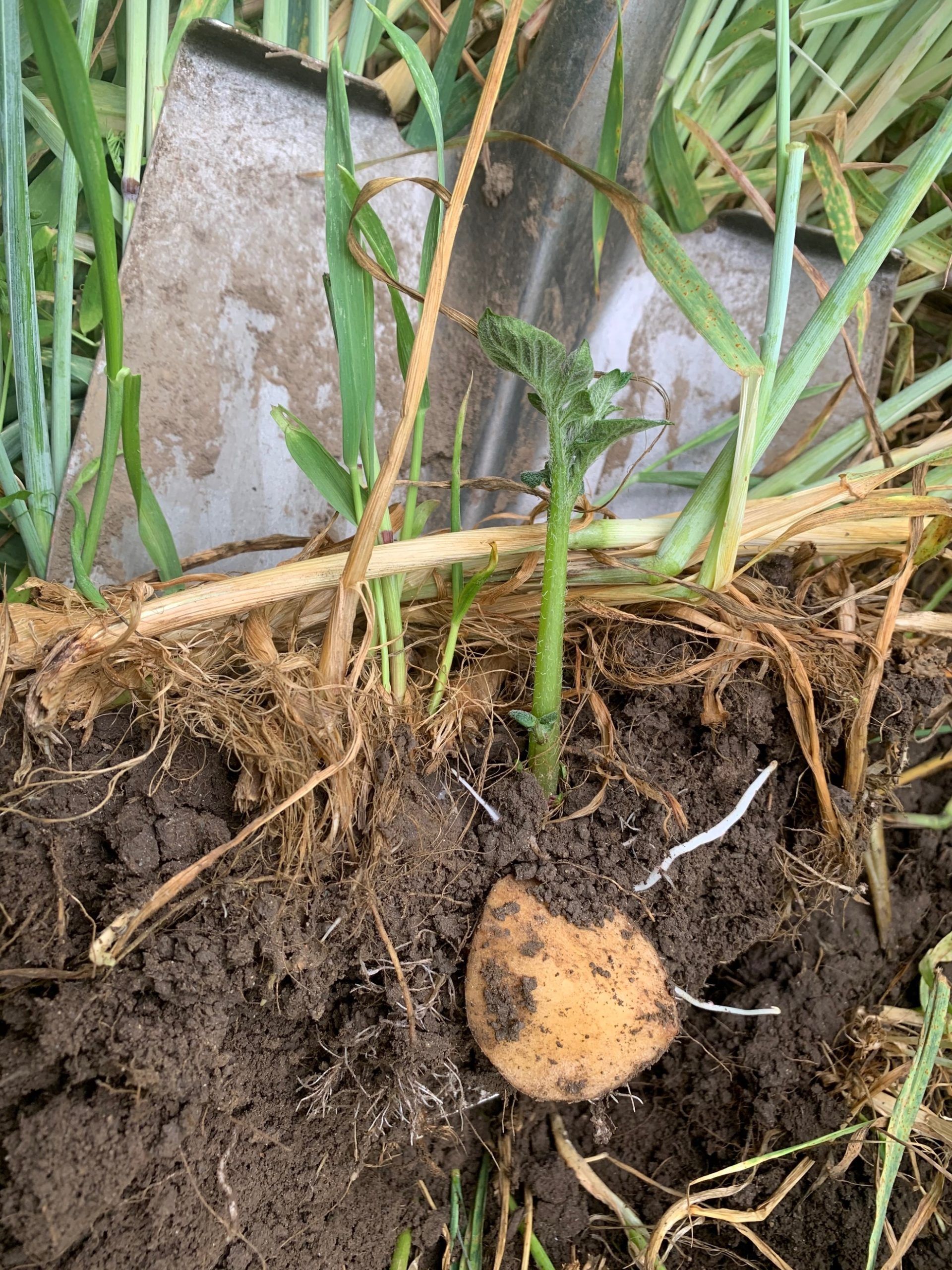
Figure 18. The development of a potato seed piece at time of mowing.

Figure 19. Late planted potatoes on June 30.
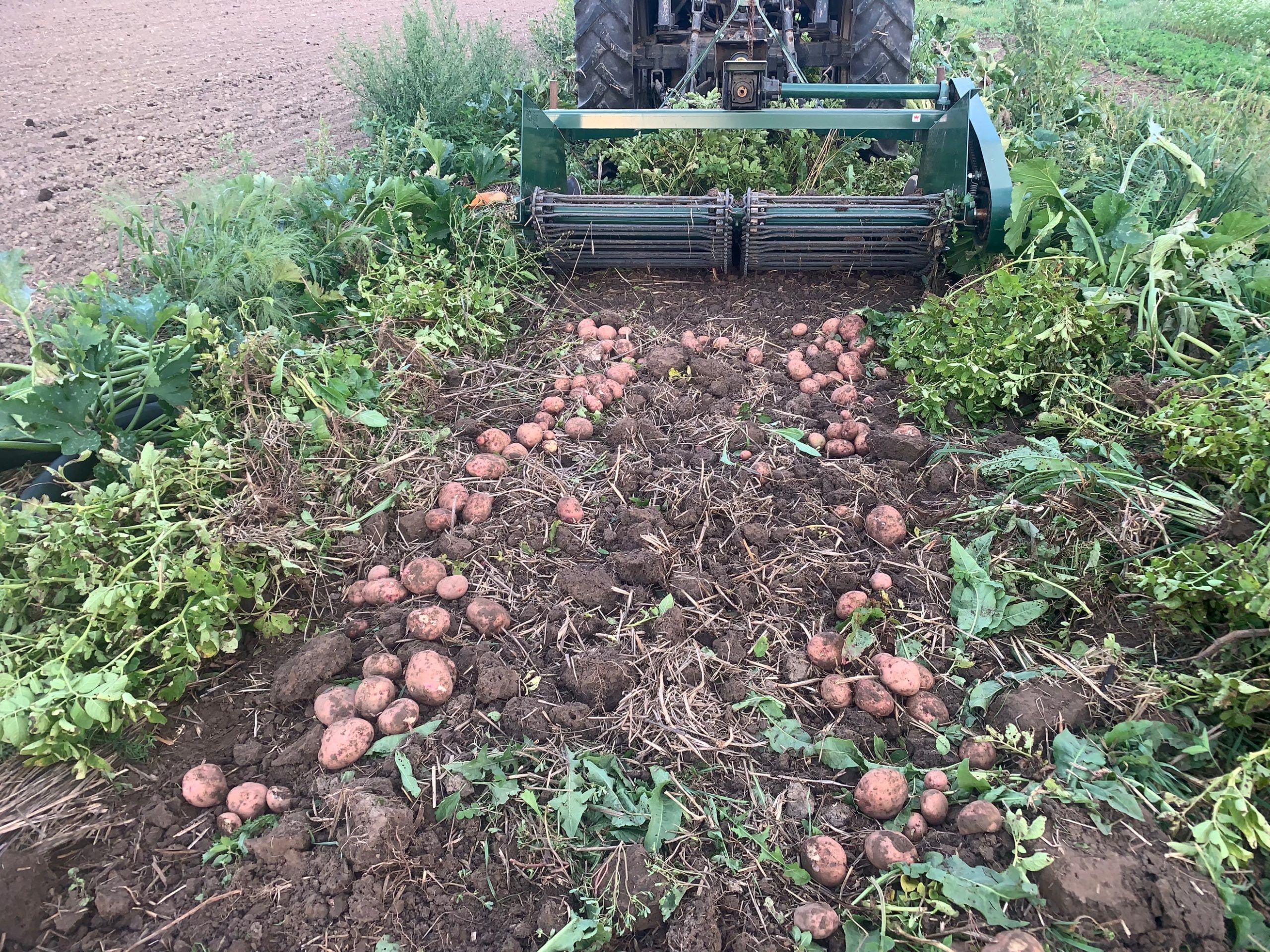
Figure 20. Digging potatoes from early planted plot on August 30.


